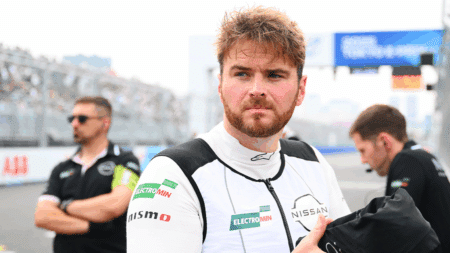
How Oliver Rowland can become Britain's next World Champion
Nissan’s Oliver Rowland could clinch his first drivers’ world championship title this weekend, here is all you need to know about the Yorkshireman competing in Formula E
Sunday’s historic electric first MotoE race at a grand prix event was only the very beginning of EV motorcycle racing
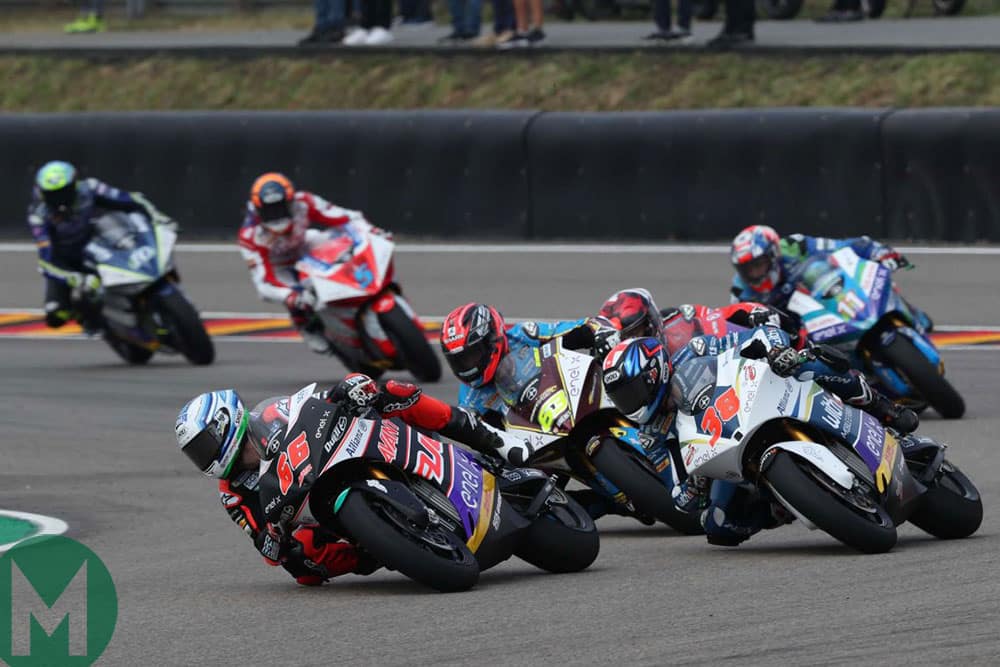
Niki Tuuli leads Bradley Smith and Mike Di Meglio in the inaugural German MotoE race Photo: Ajo Motorsport
MotoGP’s first MotoE weekend was certainly historic. I’m 100 per cent certain that during the entire history of motorcycle grand prix racing there’s never been so many painful puns broadcast by commentators: the charge to the first corner was awesome, the racing was electrifying and there were plenty of shock overtakes. I could go on, but I’ll save you.
Seriously though, what to make of grand prix racing’s first-ever electric race? Well, it was a motorcycle race and if you had watched the shortened five-lap dash with the sound down you’d most likely never have guessed that the bikes were powered by electricity and not by gasoline. Riders crashed, tyres were smoked and there was plenty of bumping and barging. What’s not to like?
Paddock opinion is split three ways about this new way of racing motorcycles around in circles: some people love change; others hate it and others don’t really care either way.
This dislike of change is nothing new. When grand prix two-strokes arrived in the 1960s many race fans hated their ear-splitting shriek and clouds of choking smoke. But they grew to love them. Then when the MotoGP four-strokes replaced 500cc two-strokes in the early 2000s many fans wailed and gnashed their teeth because their noses missed the smell of burnt two-stroke oil and their ears missed the crackle of expansion-chamber music.
MotoE should expand steadily over the next few seasons then at some point in the near future better battery technology will change everything
Roughly speaking, it’s a generational split: those who grew up smoking fags and drinking heavily are less into the idea of electric-vehicle racing than those who grew up with iPads and energy drinks. Carlo Pernat, the oldest of the paddock’s old guard, has zero interest in MotoE. “They may be the future,” he hissed thought a cloud of cigarette smoke. “But they’re not my future.”
Mugen’s TT Zero winner Michael Rutter sums up the reality better than most. “It’s going to happen whether you like it or not, so you may as well embrace it,” he says.
Of course, electric motorcycle racing isn’t brave-new-world technology – people were racing EVs more than a century ago. The only reason they went with petroleum (from Ancient Greek, meaning rock oil: petra for rock and elaion for oil) instead of electricity was because the energy was easier to handle, much the same as it is now.
But things are changing, fast. Much of the car industry has already given up on internal-combustion development and is spending billions on EV development. And more car manufacturers contest the Formula E car race series than Formula 1.
Dorna created MotoE because it had to for the above reasons. And also because if it hadn’t, someone else would’ve. It therefore had to start somewhere, so whatever the hype for Sunday’s MotoE race, the importance is the future rather than the present.
The current (sorry) MotoE World Cup is a low-cost, one-make, production-bike starter series; the only way of getting the concept underway, because there’s nothing like as much money in bike racing as there is in car racing. There’s simply not enough cash around to build a grid of Mugen-type prototype EVs.
Related content
Also, all the major motorcycle manufacturers are standing back from the race to EV production, waiting for the breakthrough in battery technology that will make it practical for them to manufacture electric bikes in their tens and hundreds of thousands.
Battery technology is the only thing that holds EVs back. An electric motor and drivetrain can already produce superior torque and drive to an internal-combustion engine and gearbox. All EVs need do is package their energy more efficiently by making it smaller, lighter and longer-lasting.
The progress in battery technology is rapid, as proved by everyday items like laptops and smartphones. It’s also moving fast in Formula E. Since the series started in 2014 Formula E batteries have improved from 28kWh to almost 60KWh, so their energy has more than doubled in six years. During the same period battery power has also increased dramatically, from 130kW to 200kW, with 250kW available for qualifying.
The people who make the current Formula E battery for McLaren Applied Technologies are a bunch of mostly former Tesla employees in the USA. The main progress to be made in battery technology is through chemical composition. Currently, lithium, nickel and cobalt are the usual ingredients, but there’s also talk of aluminium, which has high energy density, offers rapid charging, is less of a fire risk and is much cheaper. At some point soon, a major breakthrough will be made.
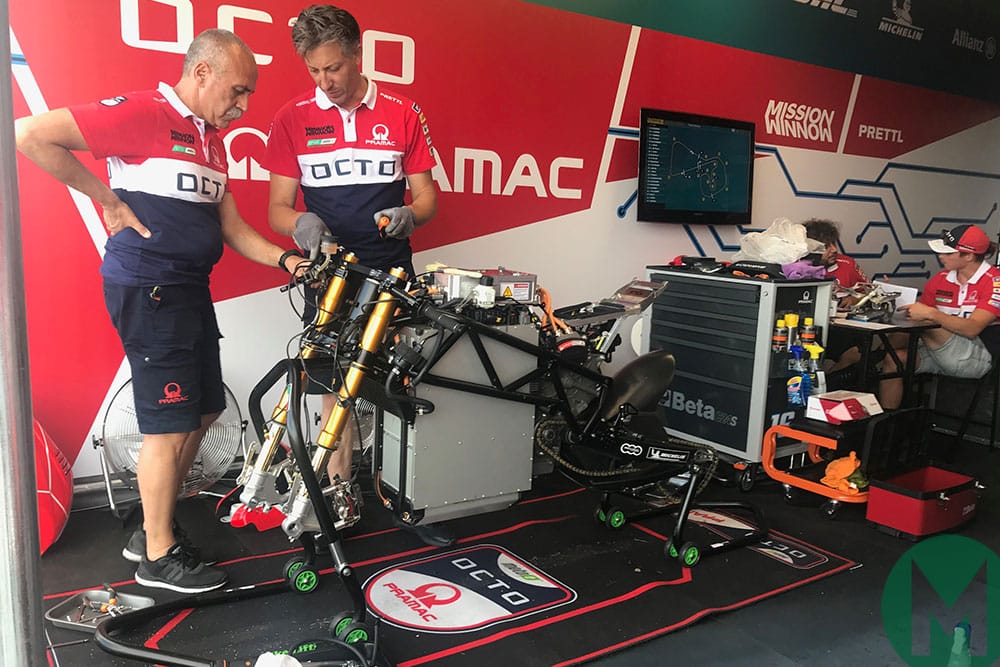
Alex De Angelis’ Energica MotoE bike – the battery isn’t small
You could argue that all this progress is even more important in motorcycles than in cars. A Formula E battery weighs around 350 kilos, but it’s not difficult to deal with that weight in a car. A MotoE battery weighs about 110 kilos, which is a very big lump to house within a motorcycle chassis.
The Energica MotoE bikes weigh around 260 kilos, which is almost 100 kilos more than a MotoGP bike, but the riders simply need to adjust their technique to suit. It’s the same with the Mugen raced by Rutter to victory in last month’s TT Zero race: for all its money-no-object tech and factory Showa suspension the Mugen also weighs around 260 kilos, simply because it’s limited by the same battery tech.
“When you brake you feel the 260 kilos, but after that it feels like a normal bike,” said former 125cc world champion Nico Terol, who finished tenth in Sunday’s race. “Also, when you change direction you must move your body before, so you must anticipate more. And when you are trying to overtake you need to think more because you have more kilos onboard.
Things are changing, fast. Much of the car industry has already given up on internal-combustion development and is spending billions on EV development
“The power at the first touch of the ‘gas’ in slower corners is incredible, there’s a lot of power, so you need to pay attention and pick up the bike for more grip. In the faster corners it’s possible to open the throttle with a lot of lean angle because the power is so linear.”
MotoE’s fork springs also highlight the weight of the bikes. Fork springs in MotoGP are around 9Nm; whereas MotoE bikes use springs of 40 to 50Nm, apparently borrowed from Suzuki’s Hayabusa. And yet riders were still bottoming forks on the brakes at Sachsenring.
MotoE should expand steadily over the next few seasons – with safety at its core at all times – then at some point in the near future better battery technology will change everything.
Once the major Japanese and European motorcycle brands get serious about manufacturing electric bikes they will want to start racing electric bikes, so MotoE will become a prototype championship, the technology will start moving forward at a rapid rate and one day EV GP bikes will be faster than MotoGP bikes. They already have advantages over ICE race bikes, including instant torque and no clutch or gearbox, which can unsettle the suspension and affect grip.
At Sachsenring race winner Niki Tuuli’s best lap was 8mph (13kph) slower than Marc Márquez’s, which isn’t bad for a first attempt.

Nissan’s Oliver Rowland could clinch his first drivers’ world championship title this weekend, here is all you need to know about the Yorkshireman competing in Formula E

Getting into professional motor sport is a highly expensive business – but new junior electric single-seater championship ACE aims to provide top-level pathway at a fraction of the price
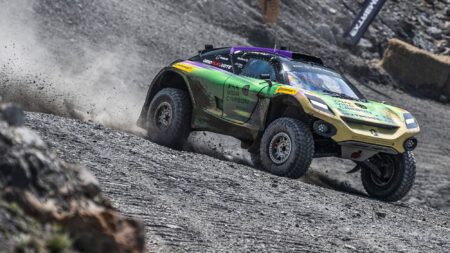
Extreme E is set to run its first hydrogen-powered car in a number of weeks – will its switch encourage other championships to do the same?
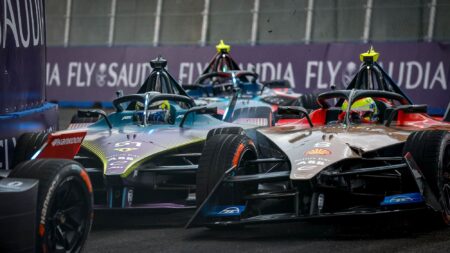
Formula E is leading the way out of FIA world championships for the best racing action this season – but will fans pay attention?